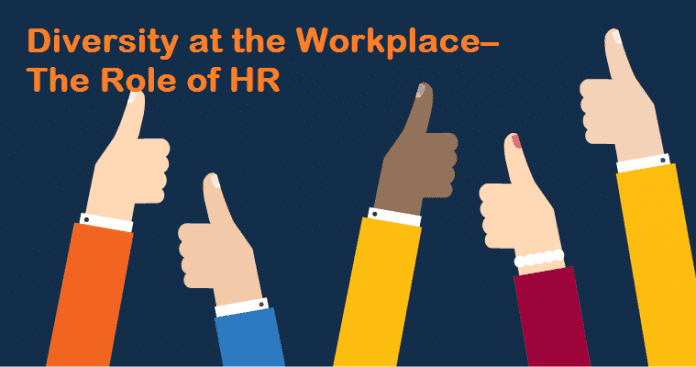Inclusion & Diversity (I&D) is a business imperative today. Simply put – it is the representation of an organization’s culture where people from different demographics come together to seamlessly deliver to the organization’s vision and mission. While doing that, they are equipped with a feeling of equality and empowered to be their authentic selves.
“Over the years, this dimension of an organization’s avatar has become an integral part of business strategy and has emerged as a key priority area for the CEO, Board of Directors and other Leaders”
Realms of statistics reiterate that healthy metrics on I&D impacts business results positively. For eg: Reports in Harvard Business Review (HBR) show that there is 53% better return on sales for organizations with higher female representation on their Board; 70% more likely for organizations with diverse employees to capture a new market. An additional study from McKinsey shows that it is 35% more likely for companies with high levels of racial and ethnic diversity to report above average financial returns. These are but a few highlights of the business benefits of cultivating a diverse and inclusive work culture.
Despite its growing significance and organizational investment in building a culture of Inclusion, employees still feel that their employers do not do enough. Only 1 in 3 employees feel their organizations are invested on this subject. What does that imply? It means that the focus on Diversity must be a showcase of demographically diverse talent, equitable sourcing and recruitment practices, policies that support the agenda, equitable pay and growth opportunities – Statistics that speak to this storyline positively. Alongside lies the more intricate, complex job of creating that environment within which employee engagement is driven by Inclusive practices.
While it is the role of the CEO, leaders and every employee to exemplify this value system, it is the role of the Human Resources Team to drive this agenda as custodians of all elements of these practices – sourcing, recruitment, policies, performance management, rewards and employee engagement. Success of an organization’s focus on I&D is an outcome of each of these elements of People Management and more. A Research based report published by SHRM around 5 areas of I&D in organizations in 47 countries shows that 59% of the people surveyed believed that the responsibility for driving I&D rests with HR and 42% of them identified HR as the advocate of I&D practices.
Yet, if you speak to an HR professional at random, you are most likely to hear them speak about I&D with only as much clarity as any other employee of the organization, unless they are in a role where they are driving this as a business outcome. And therein lies the dichotomy and probably the reason why the best of efforts of an organization in this area go awry. It not because of lack of awareness in the HR community about the role they play in driving this strategy, but more to do with the depth and intricacy of the subject itself.
HR showcases success with analytics and numbers. I&D however is cultural, is all-pervasive, and can impact even the smallest experience positively or negatively. The best statistics on diversity are not enough for positive business impact and employee advocacy if they are not accompanied by a culture of Inclusion.
Speaking about I&D can raise a lot of uncomfortable conversations:
- “Why was that woman promoted ahead of me when my chargeability is higher?”
- “I cannot hire that person with a visual disability as I do not think he is going to excel at his job”
- “We cannot place a person of that ethnic background in such a sensitive, decision-making role”
- “My client will not welcome a Unit Lead who is a Transgender”
- “Why have we allowed a man to take three months off to look after his new-born child?”
An HR professional deals with multiple such touchy conversations in a given working day. That’s not all. Ironically, these are conversations that are in the open – they are direct. Most responses to I&D are however, covert behaviors – 90% of it lies below the ice-berg and HR is left dealing with very deep biases that come in the way of driving I&D like any other metrics.
Therefore, what will help?
Role of the HR Lead
The CEO cannot be lonely at the top as far as the I&D agenda is concerned. The HR Lead must be seen standing head to head with the CEO as the organization’s Champion of I&D, driving not only the numbers but associated behaviors that allow for its success.
While the CEO articulates the vision, the HR Lead demonstrates action against this vision. He or she is an Influencer – impacting the way all the other business leaders drive this agenda within their respective spans. The HR Leader wears two hats. He drives the agenda with the “what” with the HR Team (10% which is statistically driven) and gets to the “Who”with peers within the organization. The “Who” conversations will range from focusing on the “reasoning behind” every recruitment that is made through the cycle of learning, rewarding and growing every individual in the Leaders’ span. That constitutes 90% of the work (going below the iceberg). Once the HR Leader is visibly seen to be driving success at the top, the behavior as a tunnel effect. Tricking down to impact the behavior of Functional and Business leaders who in turn influence the way their team leaders demonstrate Inclusive behaviors. The HR team is then empowered to drive success within other multiple layers of managing people.
It is extremely important to remember that a HR professional is also an employee of the organization focused on his or her own career, growth, ambitions and needs to be protected and supported by the Leader to drive the I&D agenda. It is the role of the HR Leader to ensure that this is not a glass house and reward and showcase only and only the right behaviors.
HR Professionals as Accelerators of Change
HR professionals should and must consider themselves as Accelerators of I&D and not treat it as an additional responsibility. The HR professional as an Accelerator must,always, drive I&D conversations as Consultants – equipped by data and analytics at an objective level and have a propensity to drive change at the subjective level. An HR professional who is consistently focused on driving the right conversation, identifies the right skill requirements, recruits right and allows meritocracy to drive growth will ultimately be successful in delivering value to the I&D agenda.
What Steve Jobs said would be well applicable to focus on Inclusion & Diversity: “Simple can be harder than complex: You have to work hard to get your thinking clean to make it simple”.









